Things have improved here on lockdown on Spain’s Costa Brava. After a week of hell, wherein the local authorities cracked down hard on outdoor activities, the rules formally loosened a tiny bit. Children are now allowed outside for the first time in 5 weeks, and we enjoyed watching families frolic on the beach below (while still maintaining plenty of physical distancing). Spain’s rules are still stricter than just about anywhere in the world, so frankly we feel very safe at the moment. And bored.
To keep us accen-tu-ating the positive, and e-lim-inating the negative, this post follows the aptly named Titanic Part 1. I hope to share with you the fun parts of our European Adventure 2020, immediately pre-pandemic.
From France to Tuscany
After three weeks on and around the south of France, we (Tony, Joy, and dog Brighton) decamped to Italy. We figured, correctly, that the further south we went the better the weather. And we wanted to avoid the big crowds of the high season.
We planned a scenic drive from Antibes to our first stop in Alba, the home of white truffles (not in season). It’s definitely a foodie town, in the heart of the Barolo wine region. The few hours we spent walking through town were the biggest crowds we experienced since leaving the airport a month previously. Which, in retrospect, is pretty scary as this region is the epicenter of Europe’s coronavirus infection. But accentuating the positive, we had a great dinner with excellent wine. The town of Alba is quite charming, and the surrounding hillsides are planted with vineyards.
The next day we were headed to an agriturismo (farm stay) near Volterra, Tuscany. We planned to take secondary roads, but it was very foggy so we just took the highway.
Volterra is a classic Tuscan hill town, with ancient roots: etruscan and undoubtedly earlier. A few etruscan elements remain, including the foundation stones of a gate in the town walls. The etruscan museum in town is excellent, and expanded my knowledge of things etruscan by several orders of magnitude.



We chose to stay a week near Volterra because of its central location. Our agriturismo was not hugely comfortable, primarily because the early February weather was too cold to sit outside, and there was not a good place to sit indoors. We would often go sit in the car, where we could get WiFi (stone walls!). But we had the place to ourselves, and Brighton really enjoyed running through the orchard and acting like a dog.
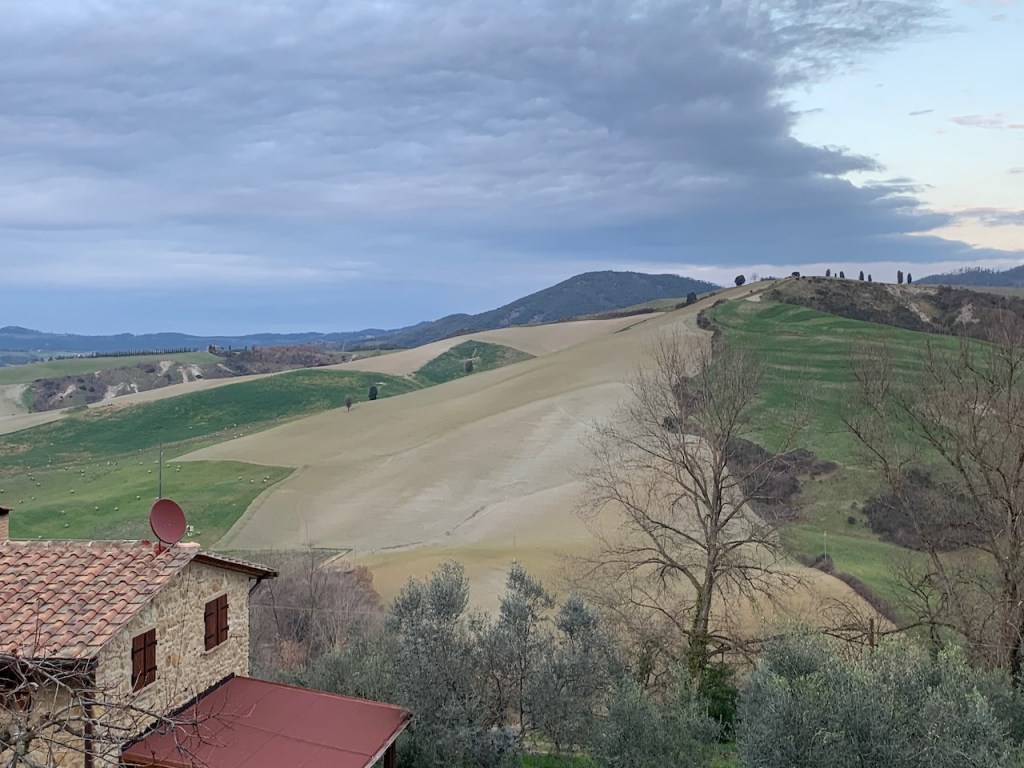
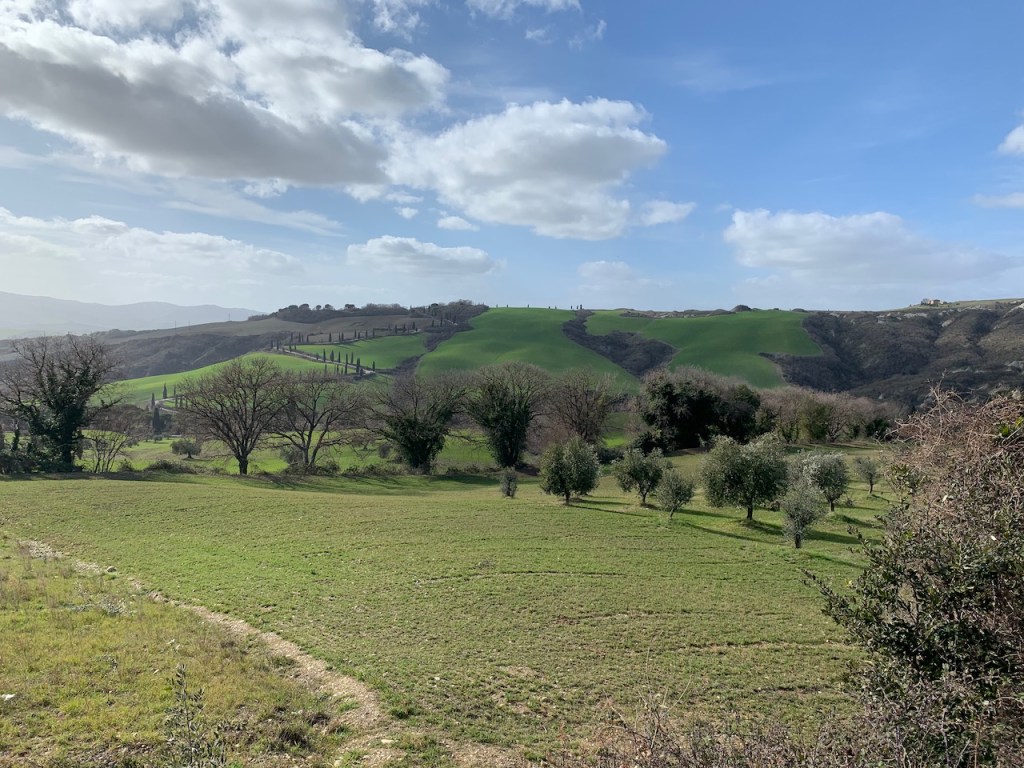
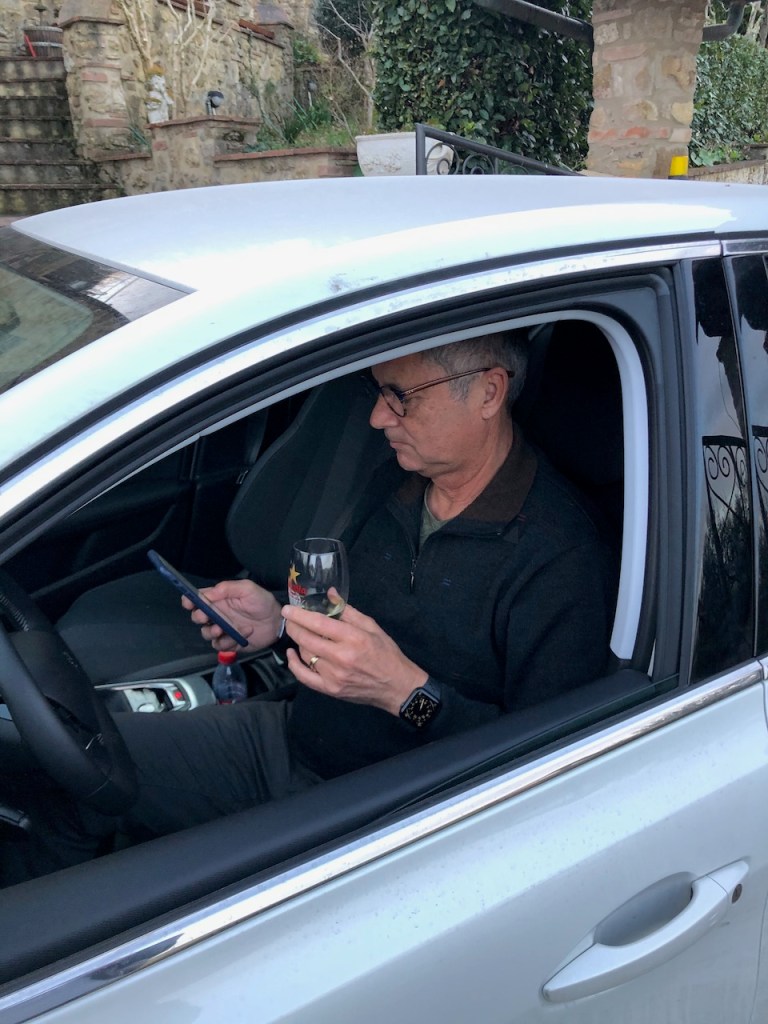
Every day we went out and visited a few hill towns. We’ve been to Tuscany once before so this time we visited the smaller places like Sam Gimignano and Monteriggioni, and toured the Brunello wine region. We completely skipped the big towns like Siena and Montalcino. We did spend Valentine’s Day in Florence because… Florence! Our experience in the Uffizi was so different than our last visit. No reservations needed, no crowds, it was wonderful.

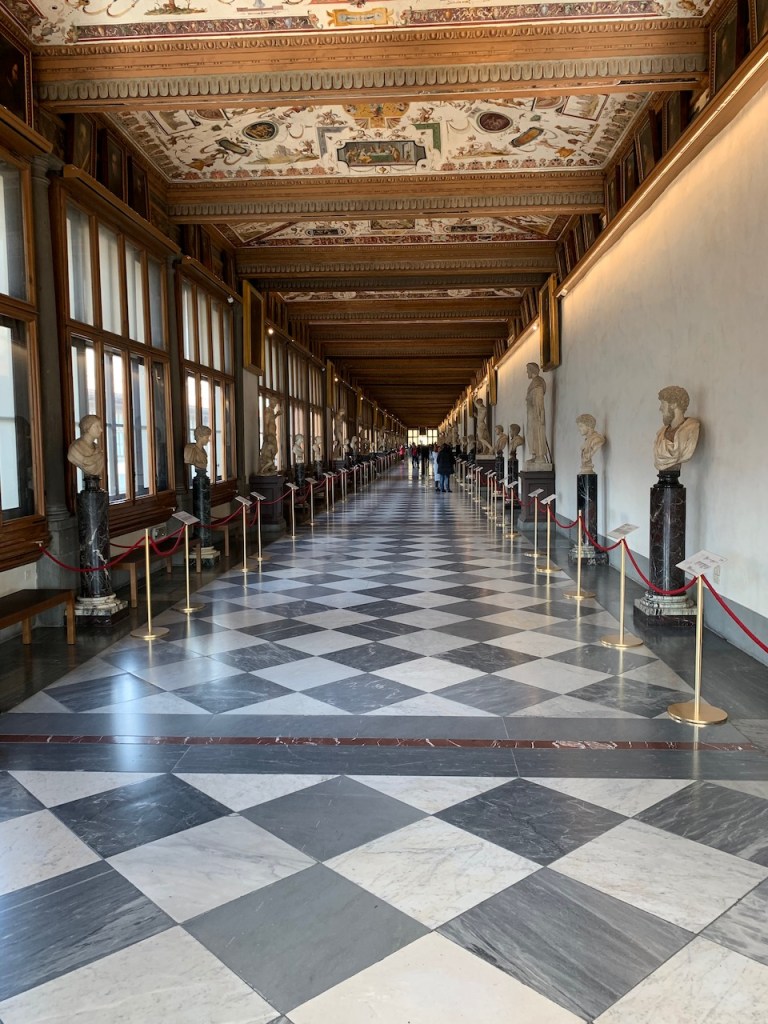
One of the nice things about planning to travel for a year is that there’s no need to hurry and pack each day with sightseeing. We typically do a few hours of touring–which mostly consists of walking through and around a town, visiting the free sights such as the churches, and having lunch. We just can’t afford to visit every museum in Europe, so we cherry-pick them. Most often we return to our hotel or apartment in mid-afternoon and relax for a few hours before we think about dinner.
We continually ran across signposts for the Via Francigena. Like the Camino de Santiago, but less famous (and hence less busy), the Via Francigena is a 1700km (1000 mile) pedestrian path that traces the medieval pilgrimage and Crusader route to Rome and on to Puglia, where the poor schmucks would catch a boat for the holy land. There’s also a bike route. I could definitely imagine doing one or both of these, though there’s no chance I’d walk the entire way. We hiked a short piece of the Via, so we can count coup on it.
Sardinia
The next phase of our adventure was to visit Sardinia. We may be the only people we know who’ve been there, with the exception of Tom and Karen, who’ve been sailing the Mediterranean and Adriatic since 2018. Sardinia: wow! We loved it. The landscape is beautiful, the seascape too–and sea caves! The food is good, though a bit heavy on cured meat and sheep cheese; the wine is fine and cheap. And best of all, the historic sites are amazing. And no crowds, at least not in February. Tony and I granted it the accolade: “we could live here.”


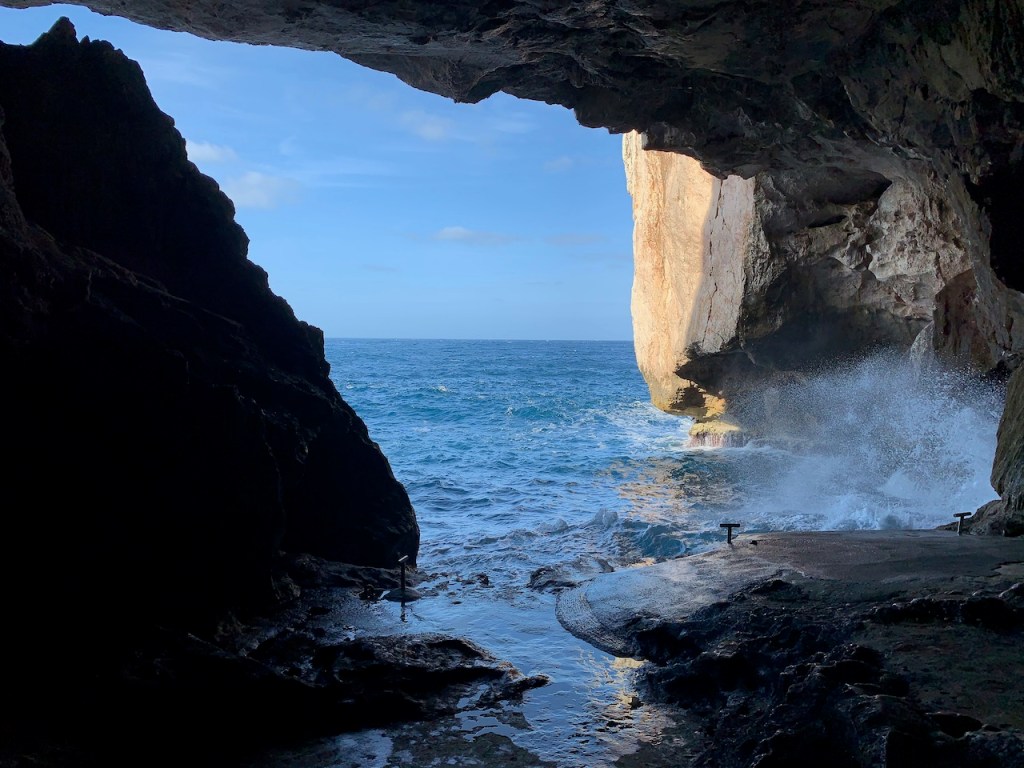
We took an overnight ferry from the mainland near Pisa. We spent a week driving around the island in a roughly counter-clockwise direction, beginning with Alghero in the northwest. Interestingly (to me), Alghero is Catalán-speaking, though most everyone speaks Italian and many speak English. There are 4-5 languages actively spoken in Sardinia, which is a lot considering its size. Many cultures have passed through over the millenia.
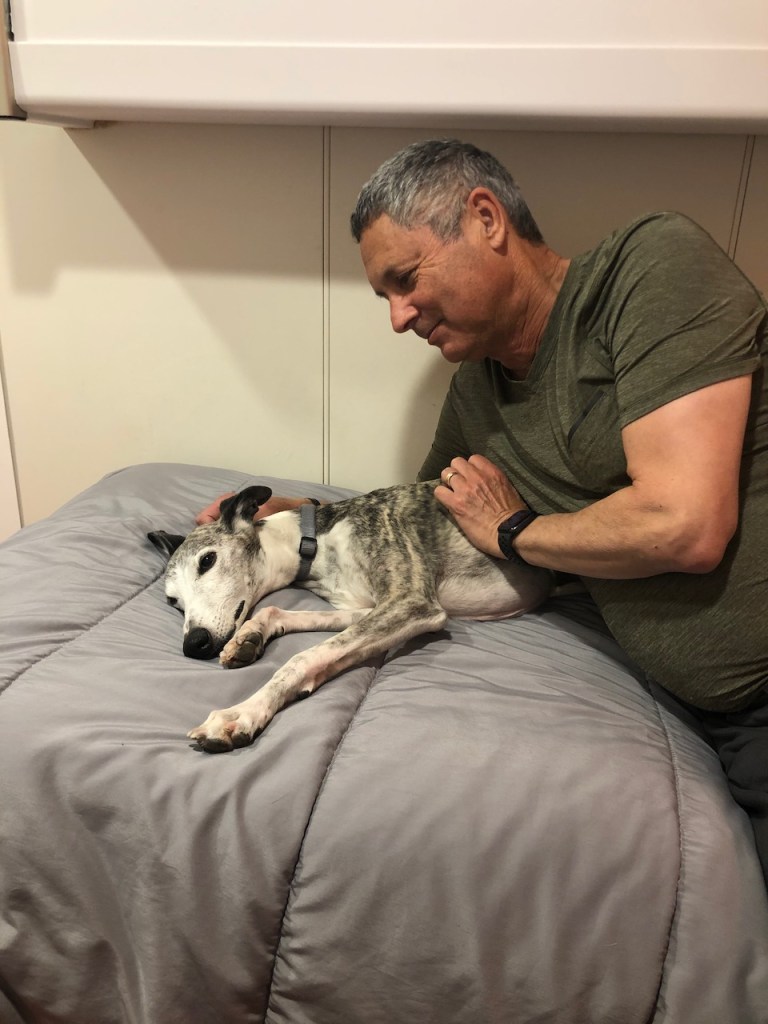

Our first stop was the Necropolis of Anghelu Ruju, from the late neolithic and early bronze age: 3200-1600 BCE. The tombs were dug out of the relatively soft rock, and were discovered only 100 years ago. So the good news is that they’ve been professionally excavated by archaeologists (the original excavation was professional enough to last 5000 years!), though some of the early archaeologists were, um, not conforming to modern standards. Still, better than graves robbed in antiquity! And perhaps the most amazing thing, to Americans: you can just crawl around in these tombs. We shared the site with a group of schoolchildren, most of whom seemed disinterested. Several boys enjoyed climbing in and out of the tombs as much as Tony and I, though rather more easily.
Fifteen minutes after we left the necropolis, we visited our first nuraghi (nuraxi in Sardinian). We were absolutely enthralled by this first one, though we learned later that it was relatively small. A nuraghi is a fortified stone tower. They are unique to Sardinia and were built starting around 1800 BCE. They may have begun as standalone towers but evolved to become the “castle” surrounded by a village of interconnected circular stone dwellings. It is really just the coolest thing ever. Here’s a reconstruction from Wikipedia.
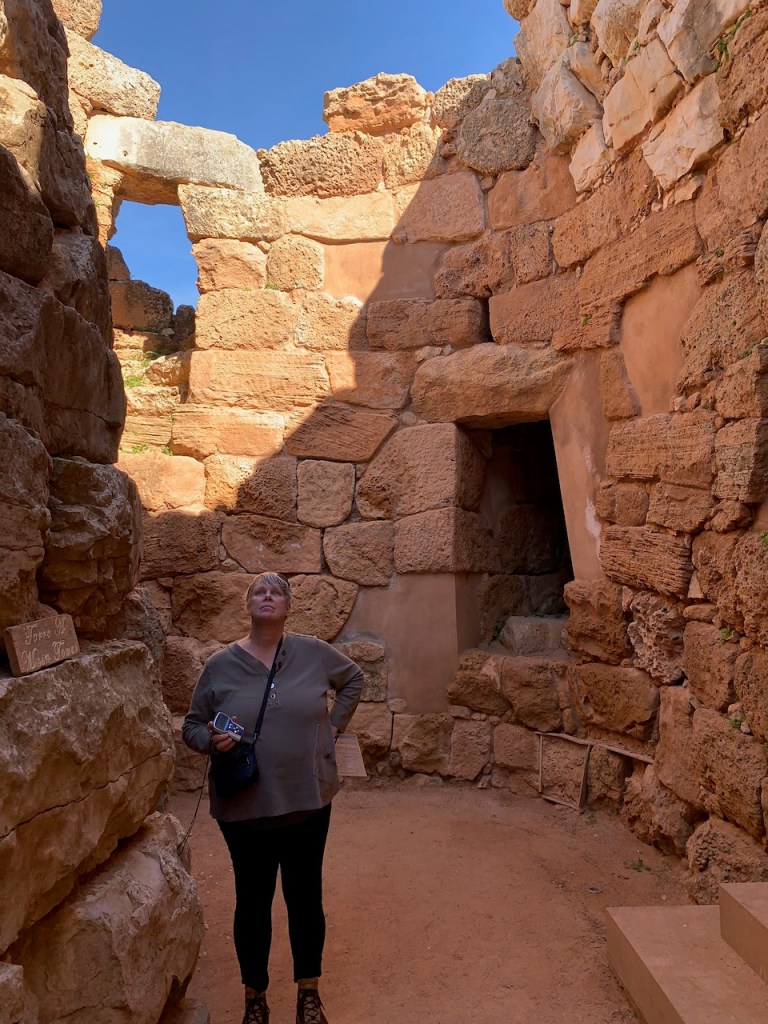

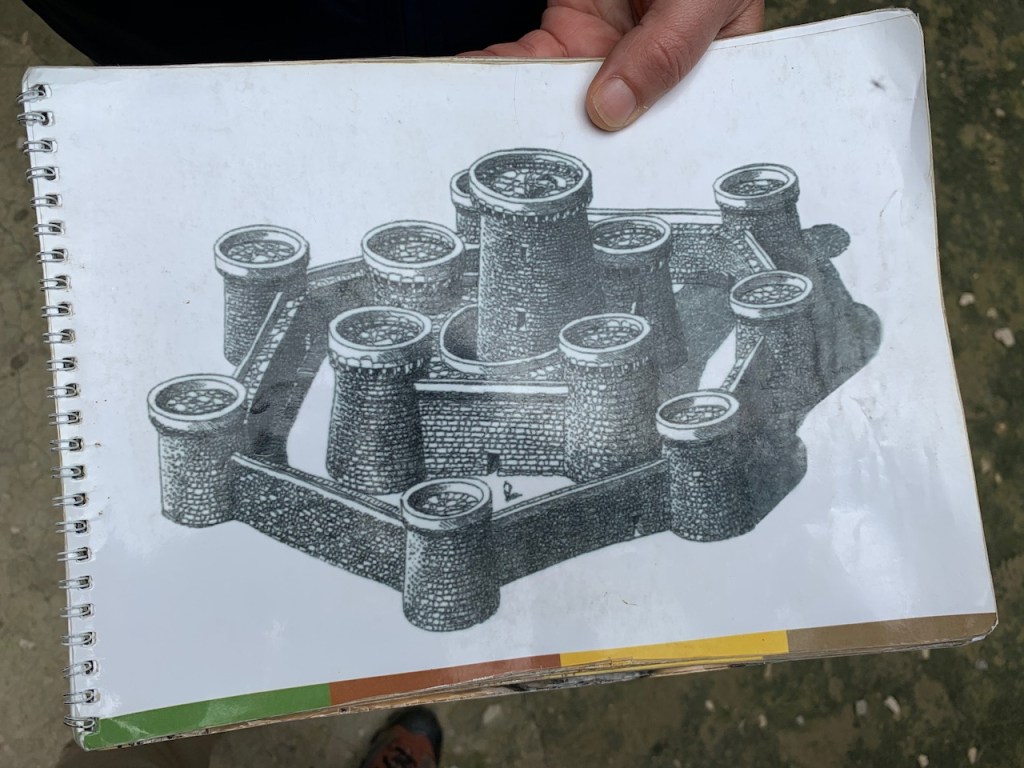
The nuraghi are all over the place in Sardinia. There are more than 7000 of them, or about one every few kilometers. As soon as you know what to look for, you see them everywhere. It is even easy to identify modern farm walls constructed from a ruined nuraghi. And just like the necropolis, you can climb over, in, up, and through the nuraghi complex. We visited half a dozen in various states of preservation or reconstruction. The most impressive was the Unesco-listed Su Buraxi di Barumini. Sadly it was being tarted up for the tourist season and we couldn’t explore the main towers, but we had an excellent guide to ourselves for more than an hour, and wrung a lot of information out of him.
We visited several Phoenician-turned Carthaginian-turned Roman-turned Byzantine cities on the coast. I particularly liked how the roman passion for things rectilinear was imposed on the more organic city plans of the phoenicians. These important cities were in use from antiquity until the Saracen pirates drove the population inland in the middle ages. Once abandoned, they remained uninhabited so the city plans are easier to visualize than many other ancient sites with even more layers of construction. Only 2000 years of occupation rather than 3000!
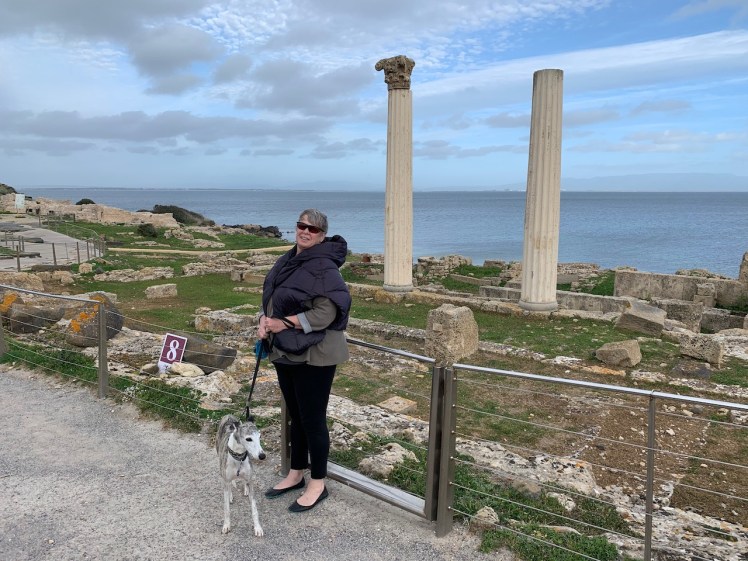
We spent a few days in the capital Cagliari, on the southern tip of the island. It was our least favorite place in Sardinia. The allies bombed the hell out of it in WWII (for reasons that seem unclear), so it’s just another city of no great architectural charm. It does have a roman amphitheatre, a fabulous archaeological museum, and good beaches.
One other noteworthy museum is the Mamoiada museum of mediterranean masks. The village Mamoiada still has an active carnevale tradition involving several masked figures. I particularly enjoyed the display of other (non-Sardinian) masked costumes, like from Spain, and seeing the ancient cultural connections.



We were in Sardinia on carnevale day, but we couldn’t attend the Mamoiada celebration as we had to catch the ferry back to mainland Italy. We did enjoy a charming tiny parade in coastal Olbia. Its cultural roots were not as ancient as Mamoiada’s.


Orvieto and Civita di Bagnoregio
Another overnight ferry returned us to mainland Italy, and we drove south to Orvieto, midway between Florence and Rome. Same old story: neolithic occupation, etruscan hill town, roman, medieval fortress… but the twist is the setting. It is truly a magnificent location atop a butte with very nearly vertical cliffs. We spent most of a day walking in and around the town. We spent a few nights in a nearby hotel with a great view of the city, which in many ways was better than staying inside the city walls.
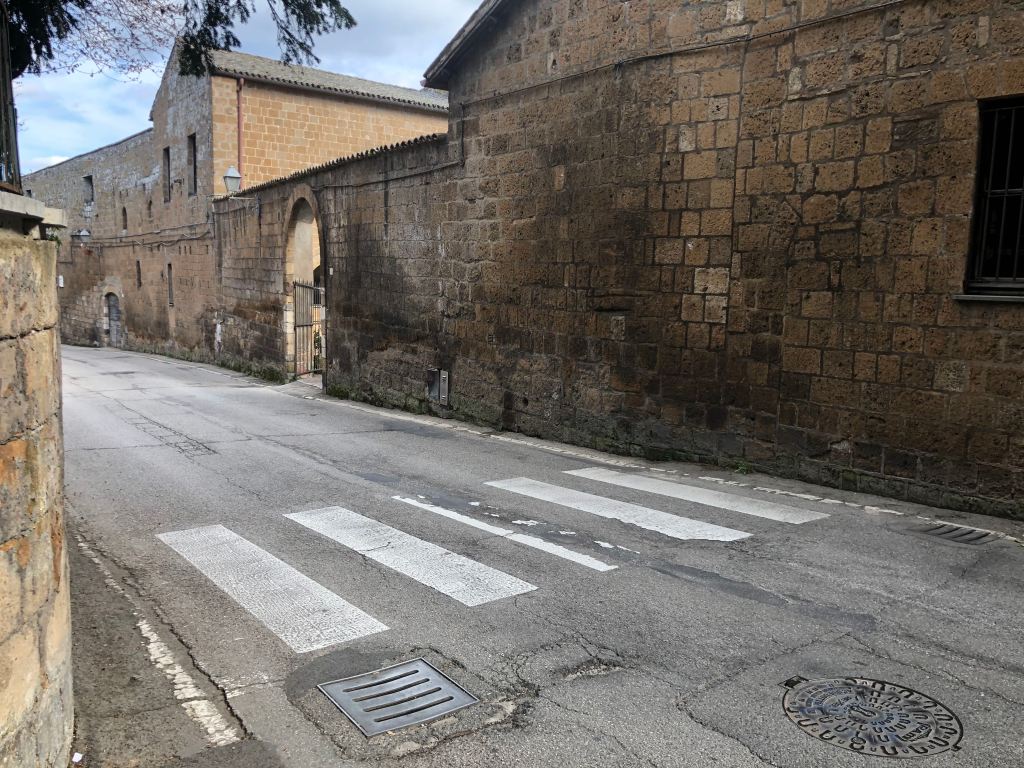

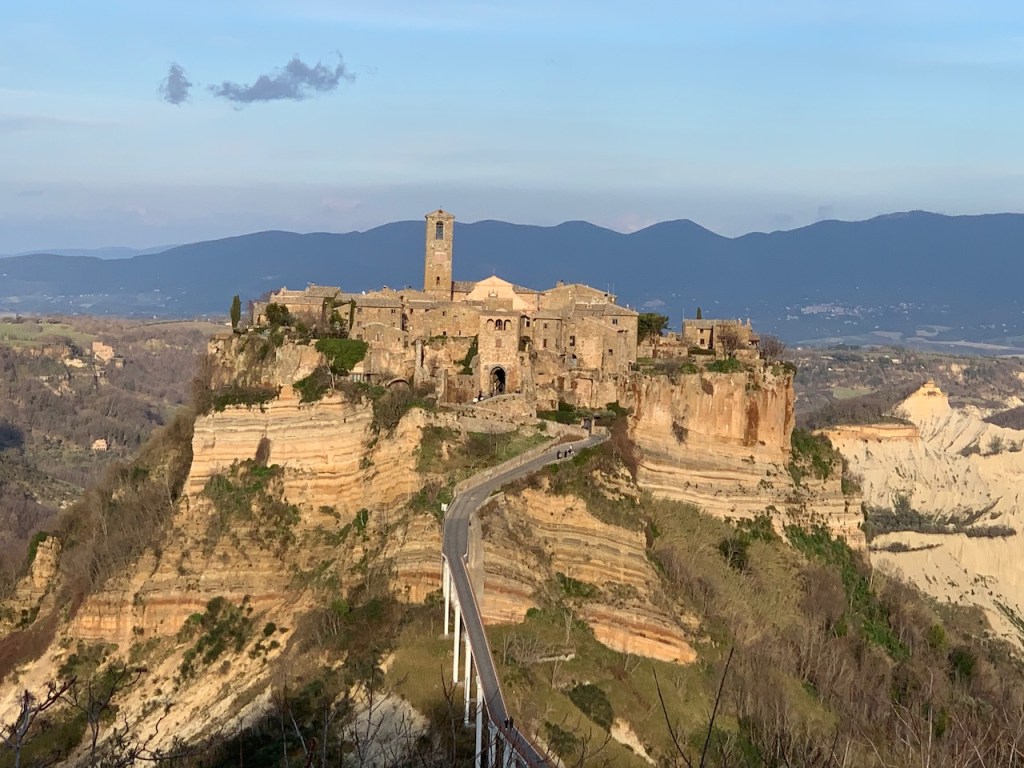
We visited the nearby Civita di Bagnoregio, which is a little bit out of the way but well worth an afternoon in the off season. This tiny hill town (same old story…) is only accessible via a footbridge! A very long footbridge. It’s about the cutest town ever. With only 11 holdout residents, though nearly a million annual tourist visits, it’s no longer a living town. But in late February, we shared our visit with about 20 other people.
It was now February 26, and the news about the coronavirus was starting to heat up. The virus itself was clearly heating up in northern Italy, with the first death occurring a few days previously. But it was still being compared to the flu, and we truly had not been around crowds, so we were not overly worried. (At this time it wasn’t widely known that carriers could be asymptomatic.) We talked about leaving Italy immediately but we had hotel reservations down south so we decided to press on. This wasn’t a crazy decision, as the Puglia region is far from the industrial north, and was largely spared. This is a good thing as Puglia is far not just geographically but also economically. I doubt they have the infrastructure to handle epidemic. Clearly, with what we know now, we should have self-isolated somewhere and not kept moving around. This is a decision we reached about a week later.
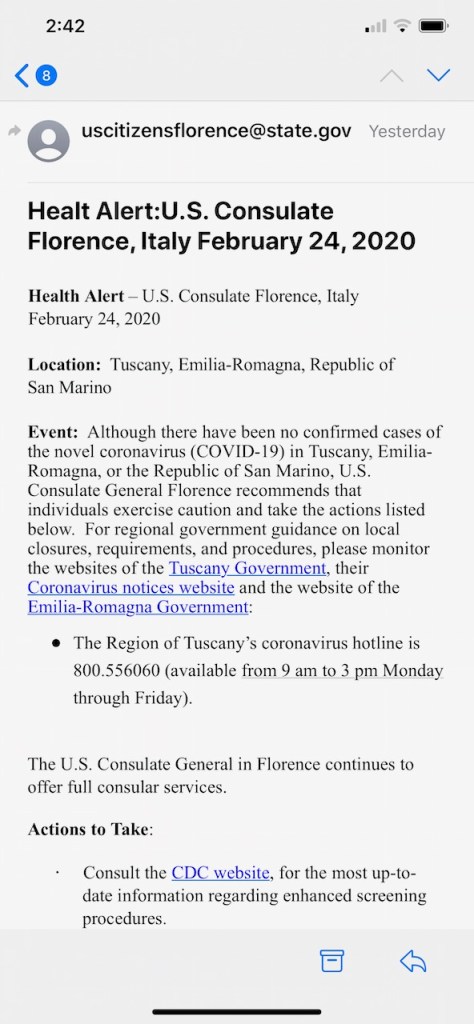
This blog post is unattractively long, so I’ll pick up here in Part 3: From the heel of the boot to the eye of the storm. Or something like that.

Really enjoyed your recap of Sardinia and Tuscany. So fortunate that you were able to see it before everything shut down. We did a driving trip through parts of Tuscany as well and it was fun hearing stories of familiar sites. And thanks for the shout out! Keep the entertaining stories coming, that is if you have time on your hands to write;)
LikeLike